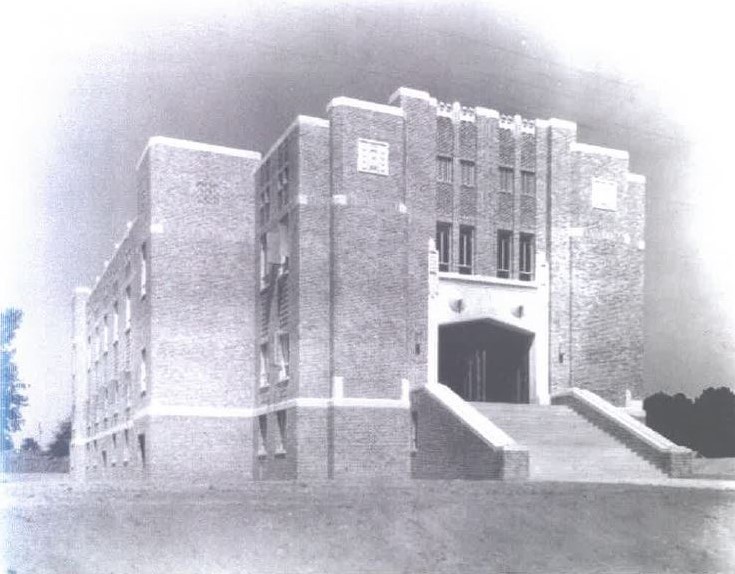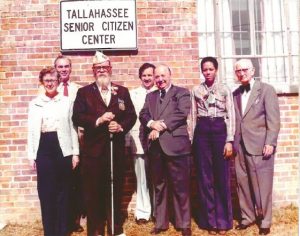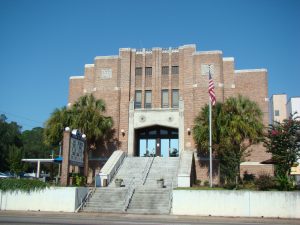The push for a new armory was greatly needed, as the State did not even own an armory in its capital, and a new building would bring more military units to Tallahassee. Therefore, with the push from one of Company M’s commanding officers, Hugh L. Mays, and a freeholder election of 185 yes to 51 no, plans for a new armory were formed. The city purchased land for roughly $5,997.11. This is how the Old Armory became located on North Monroe Street. Further funding was received from Franklin D. Roosevelt’s “New Deal” programs. With this grant, the construction for the armory came to about roughly $65,000 to $66,197 and the total cost of building, including the land purchased, was between $73,911.77 and $74,365.
Architect E.D. Fitchner and Logan Brothers Construction Company of Tampa were selected for the project. The armory was completed in June of 1935. The architecture of the building is Art Deco for its modern symmetric structure decorated with geometric brick designs. The front has a fort-like or castle-like entrance with ascending steps to a stone arch over two massive double doors. Adding to the dominating elegance of the building are corner towers, each with an image of an eagle in stone. Some of the military orientation from its original use can still be seen. Most noticeable is the stone imprinted words “Leon County Armory” on its arch. To each side of these words is a Roman Shield.
The design of the armory meant to serve both the federal military unit and the community. The location site file described the middle floor as having the drill hall and offices of commanding officers. At the time, the drill hall was one the largest auditoriums in the city. The upper floor was more offices and a gallery. The auditorium was used for community activities, such as shows, dances, roller skating and sporting events. The lower floor was closed off to the public because it stored ammunition and equipment for the local unit and all of northwest Florida.
Once the building was completed, a formal dedication was performed on November 8, 1935. The ceremony included inspections of the entire building, a ball, and presentation of the armory to the State Armory Board. Under Captain Hugh L. Mays, Company M, 124th Infantry moved into the armory. Over many years and leaders, this company served its state and nation. On November 25, 1940, the company was mobilized for World War II, and the men in the company transferred to other divisions. Officially, Company M was disbanded in 1945. During the time the troops went to war, the Florida State Guard utilized the armory.
When WWII ended, Company A, 124th Infantry was organized for the armory on January 24, 1947, under Ralph C. Davis. This company’s service was mainly used for field training, natural disasters, and political ceremonies. When not in field training, a typical day in the armory included morning meetings, classes, and training drills. This armory was in use housing units and headquarters until 1975. When the Tallahassee National Guard outgrew the building, it moved into the current Henry W. McMillan National Guard Armory.



